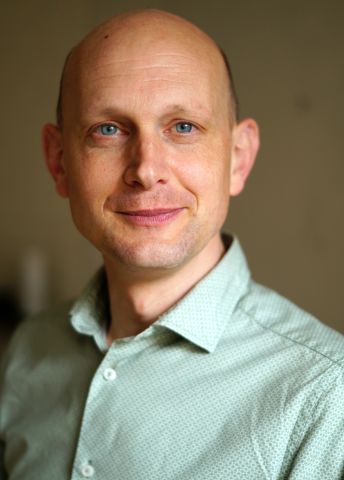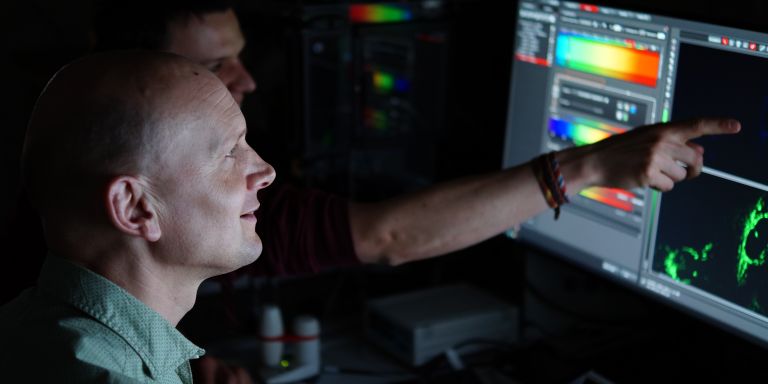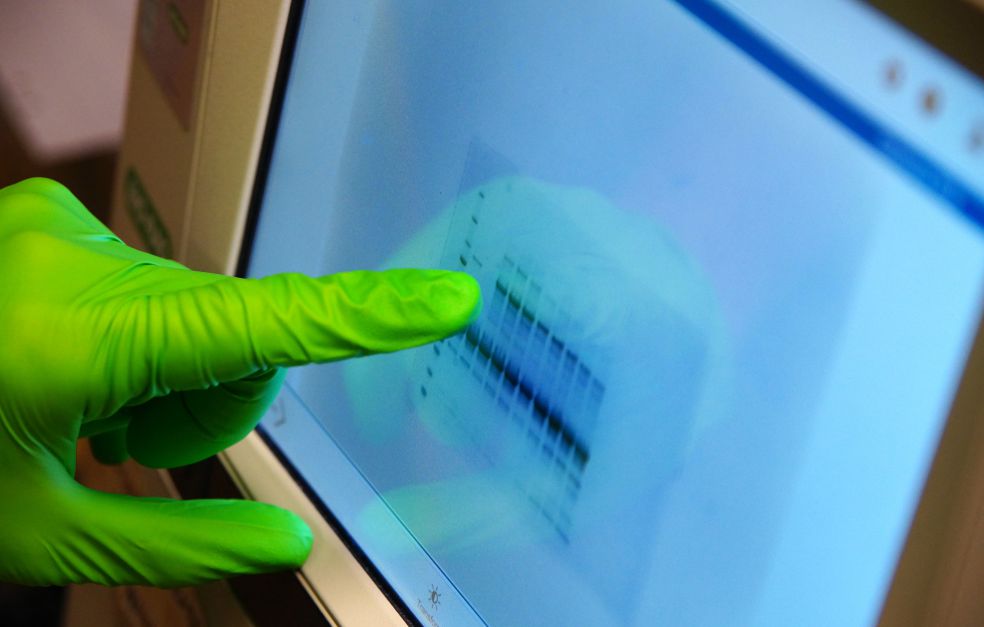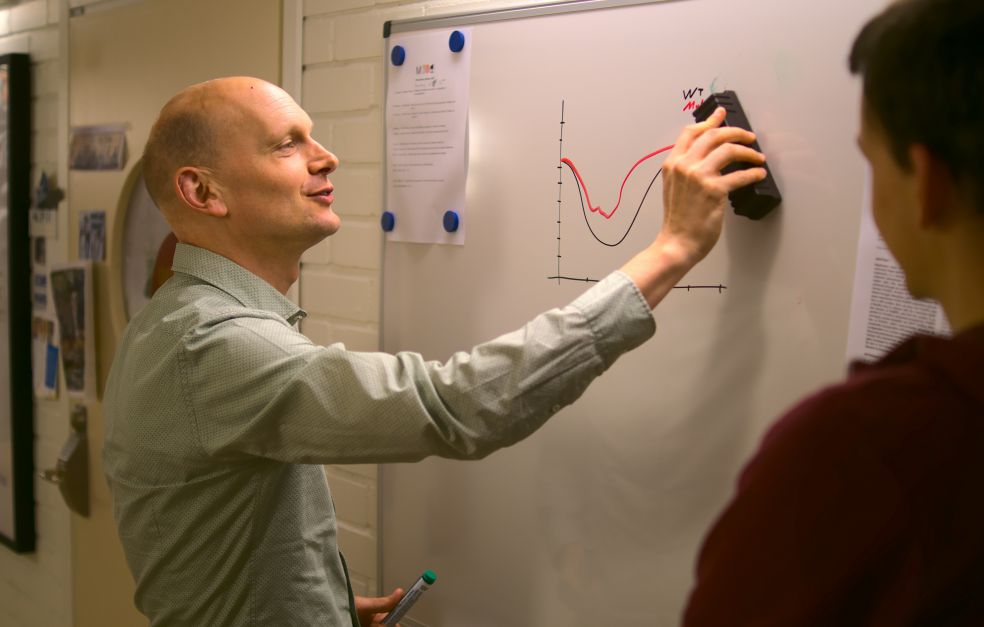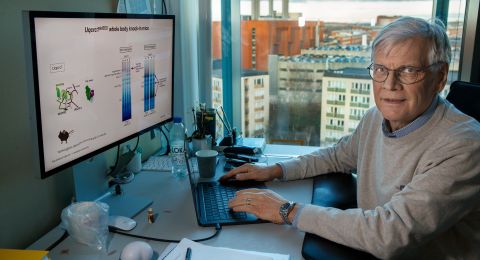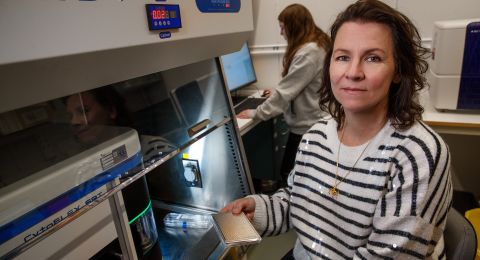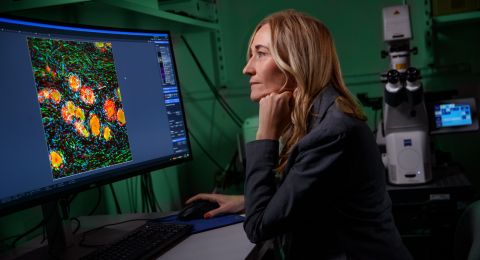Sjoerd Wanrooij is studying a protein capable of rescuing the replication process if mitochondrial DNA is subjected to stress. He hopes to help in the development of new and better drugs to treat Parkinson’s and other diseases.
Sjoerd Wanrooij
PhD, Medical Chemistry and Biophysics
Wallenberg Academy Fellow, prolongation grant 2019
Institution:
Umeå University
Research field:
Molecular mechanisms in replication and repair of DNA in human mitochondria
Mitochondria are the powerhouses of human cells; they convert nutrients into energy. They have their own DNA – mitochondrial DNA. It codes for 13 proteins that are necessary both for energy production and metabolism.
If large portions of this genetic information are lost, the result may be various neuromuscular symptoms and hereditary diseases, as well as Parkinson’s disease.
Wanrooij is attempting to understand why mitochondrial DNA is broken down.
“Our research may lead to therapies for mitochondrial diseases caused by damaged DNA,” he says.
Examining damage to DNA
Wanrooij joined Umeå University when he was chosen as a Wallenberg Academy Fellow in 2013. There he has established a research team to study molecular mechanisms, replication and repair of DNA in human mitochondria. The project period has now been extended for a further five years.
“During the initial project period we developed a number of techniques to understand the mechanisms that cause losses in mitochondrial DNA,” he explains.
Each time a cell or a mitochondrion divides, the mitochondrial DNA has to be replicated. The process is normally unproblematic, but sometimes the cell is exposed to a pathogenic virus, bacteria or other foreign particles that disrupt synthesis.
Wanrooij has discovered a warning signal in the form of slower replication. This may result in a deletion, i.e. a loss of one or more nucleotides from the original sequence.
His research team has recently shown that a DNA polymerase called PrimPol can rescue replication by triggering production of mitochondrial DNA. PrimPol is therefore a candidate for use in future therapies for mitochondrial diseases.
“All cells are exposed to stress, and need a multitude of methods to cope with it. It seems as though the PrimPol protein is not needed under normal conditions, but if problems occur in the replication process, the protein can ensure that DNA continues to be copied.”
The researchers in Umeå plan to recreate the critical phase of the replication process in two types of experiment to identify exactly how the harm occurs.
PrimPol will first be purified and studied in vitro, i.e. in test tubes.
“Adding PrimPol to the DNA enables us to study the replication process down to the tiniest detail.”
The next step will be to transfer this knowledge to cell culture-based experiments that mimic real-life scenarios in patients with mitochondrial diseases.
“The in vitro experiments tell us a great deal about the cell, but not how in works in real life. The cell culture experiments will enable us to study what the protein does in context. We expect that a given quantity or function of PrimPol will prevent damage to mitochondrial DNA, thereby hindering onset of Parkinson’s disease, for example.”
Favorable research climate
At the moment Wanrooij is immersed in a paper that is to be submitted to a scientific journal for assessment. There is always language that can be improved, factual information that can be added or deleted.
Like other researchers, Wanrooij has been unable to attend scientific conferences during the pandemic. The lack of travel also has caused him to miss his home city – Amsterdam, even though he really enjoys living in Umeå. In the northern Swedish city it only takes a couple of minutes to drive from the center to nearby green areas. People are friendly and the pace of life is gentle.
Most of all he appreciates the Swedish research community, which is well organized, encourages independence and makes realistic demands. Major funding sources understand that researchers have to take risks.
”The best of the long-term funding from the Wallenberg Foundation is that it allows me to give talented young researcher in my lab many years funding security which gives them time to do good science and develop their projects.”
“A research project can pose major unanticipated challenges. Science is 99 percent failure and one percent success. But you can learn a lot from a setback.”
As an example he mentions a study that he originally intended to bin, since the results were not those he had expected. But he took another look at the figures, and realized they were in fact informative, but from a different angle.
At the Department of Medical Biochemistry and Physics his team is affiliated to a further ten or so research teams.
“At a large university you don’t even know what work your neighbor is doing. Here, however, I’ve collaborated with four or five groups at my own workplace.”
He often seeks advice from his wife, Paulina Wanrooij, who has her own team and is also researching mitochondrial DNA. In addition to Wanrooij himself, his own team currently comprises eight members plus a master’s student.
“It’s a great privilege leading a team, even though the role in itself is almost a full-time job.”
Text Carin Mannberg-Zackari
Translation Maxwell Arding
Photo Gorazd Stojkovič
